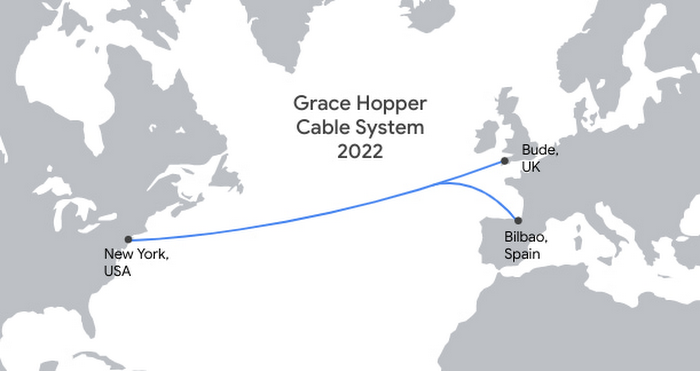News
Google’s 3,900-Mile Grace Hopper Undersea Cable Lands In The UK
Undersea cables are the backbone of the internet, carrying around 98% of international traffic.

Google has a good reason to celebrate this week because the tech giant has successfully completed its 3,900-mile undersea cable. The cable is named Grace Hopper, after the American computer scientist who was one of the first programmers of the Harvard Mark I computer, and it connects New York (United States) to Bude (United Kingdom) and Bilbao (Spain).

The Spanish branch was completed earlier in September as the first-ever Google-funded route to Spain. Now that the UK branch has landed as well, the mission, which was first announced last July, has reached its end.
“Grace Hopper represents a new generation of the trans-Atlantic cable coming to the UK shores and is one of the first new cables to connect the US and the UK since 2003,” says Google in the official announcement. “Grace Hopper will connect the UK to help meet the rapidly growing demand for high-bandwidth connectivity and services”.
The cable uses a cutting-edge multi-directional fiber switching architecture that lets Google better move traffic around outages and provide the reliability necessary to power critical Google services like Meet, Gmail, and Google Cloud.
The multi-directional fiber switching architecture will also help tightly integrate the upcoming Google Cloud region in Madrid into Google’s global infrastructure. The new region will leverage Telefonica’s Madrid region infrastructure to foster Spain’s digital transformation and advance 5G mobile edge computing.
Also Read: Carrefour City+ In Mall Of The Emirates Becomes Dubai’s First Contactless Store
Undersea cables like Grace Hopper are the backbone of the internet, carrying around 98% of international traffic. The first optical telecommunications cables were laid on the ocean floor back in the 1980s, and their number has since then grown to more than 400. The actual optical fibers that carry data between continents are only as thick as a single strand of human hair, but they’re protected by several layers of shielding and isolation.